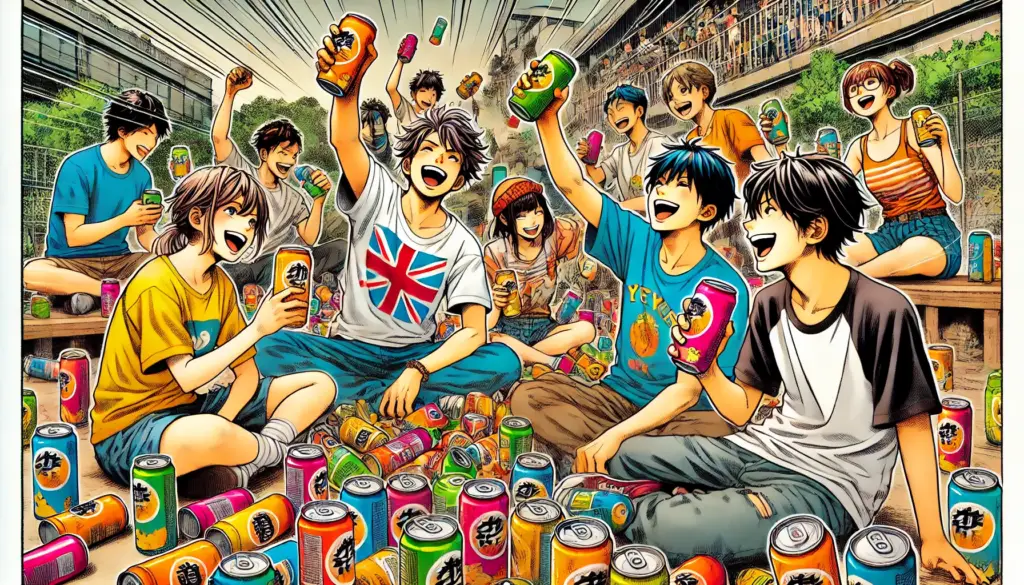
Introduction
In recent years, strong chu-hi—ready-to-drink canned alcoholic beverages with unusually high alcohol content—have become a cultural phenomenon in Japan. Affordable, convenient, and deceptively smooth, they are often described as a kind of “legal drug.” But why are they so popular, and what medical risks do they pose?
1. What Makes “Strong Chu-Hi” So Appealing?
Strong chu-hi generally contain around 7–12% alcohol, far more than beer or standard chu-hi. At the same time, they are flavored with fruit or soda-like sweetness, masking the harshness of alcohol.
Key points behind their popularity include:
- Quick intoxication: One can is enough for many people to feel drunk.
- Low cost: They are cheaper than cocktails or wine but deliver stronger effects.
- Smooth taste: Their sweetness makes them easy to drink, even for those who normally dislike alcohol.
For younger drinkers or people looking for efficiency, strong chu-hi appear to offer the perfect shortcut.
2. The “Legal Drug” Label
Some specialists have expressed concern that these beverages function like legal stimulants. Just a few cans can induce severe intoxication, leading to aggressive behavior, memory loss, or relapse for those with a history of addiction.
The comparison to drugs comes not only from their strength but also from their accessibility. They are sold in convenience stores across the country, available to anyone of legal age, and marketed with bright colors and fun designs—making them appear harmless.
3. Popularity Trends and Social Impact
Surveys show that more than half of adults in Japan have tried strong chu-hi, and a significant portion continue to drink them regularly. Among these regular drinkers, the rate of hazardous or harmful alcohol use is noticeably higher compared to those who avoid them.
This suggests that while strong chu-hi are mainstream, they are not consumed in the same way as casual beer or wine. Instead, they often serve as a tool for quick stress relief, heavy drinking sessions, or even solitary consumption.
4. Medical Risks: What Are the Dangers?
a) Overconsumption
A single 500ml can already contains more pure alcohol than the daily limit recommended by health authorities. Consuming multiple cans in one sitting places heavy strain on the body.
b) Addiction Potential
Because they are tasty and easy to drink, many people consume them faster and in greater quantities than intended. This pattern increases the risk of dependency over time.
c) Long-Term Health Effects
Frequent intake is linked to liver disease, cardiovascular problems, damage to the nervous system, and even heightened cancer risk. Moreover, alcohol remains one of the top global causes of preventable death—an issue that is often underestimated because of its legality.
5. Industry Response and Changing Attitudes
In recent years, major beverage makers have begun shifting away from new “super-strong” product lines. Companies have announced plans to focus more on moderate or low-alcohol alternatives, reflecting changing consumer attitudes and increasing awareness of health concerns.
This shift suggests that both industry and society are starting to recognize that unlimited access to ultra-strong alcohol may not be sustainable in the long run.
6. My Perspective
Strong chu-hi illustrate a paradox: they are legal, cheap, and socially accepted, yet potentially as risky as illegal substances. Their packaging and flavor profiles make them seem like harmless fun, but in reality, they encourage patterns of excessive and potentially harmful drinking.
Rather than demonizing those who drink them, the focus should be on education and awareness. Understanding alcohol content in grams, recognizing early signs of dependency, and promoting responsible drinking are crucial steps.
The growing move by companies to tone down their strong offerings provides an opportunity to reshape Japan’s drinking culture into something healthier and more sustainable.
7. Final Thoughts
Strong chu-hi are more than just beverages—they symbolize a cultural moment where convenience, affordability, and escapism intersect with public health concerns. They may not be classified as illegal drugs, but their effects can be alarmingly similar. For young people especially, the line between casual drinking and dangerous dependency becomes worryingly thin.
As attitudes continue to shift, the future of strong chu-hi in Japan will likely be shaped by a balance between freedom of choice and the responsibility to protect public health. 🍹



















































